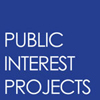Funder Partnerships
One of the benefits of a human rights approach to racial justice is that it enables and encourages people coming from different places and perspectives to work together, while at the same time helping to limit power imbalances. For example, funders and advocates can cultivate partnerships to great effect.
—Laleh Ispahani, director, Open Society Foundations, Transparency and Integrity Fund
Partnership between funders and community groups offers the potential for more effective field-wide impact. Funder-advocate partnerships work best when they are marked by honest communication and role clarity.
Aspects of these relationships are challenging, and require open and ongoing conversations around transparency and power differences. Funders must understand that grassroots groups are often under-resourced and do not have the capacity to participate in every collaboration. However, with open lines of communication, lack of confusion about financial commitments, and an understanding of shared goals, these partnerships result in meaningful outcomes that benefit an entire field.
One example was shared by the donors to the U.S. Human Rights Fund (USHRF) and advocates with whom they work. Together, they engaged in a funder-advocate partnership that facilitated shared analysis and strategy development. This collaboration focused on challenging the practice of sentencing juveniles to life without parole. Funders and advocates joined forces to raise almost $900,000 from eight donors for an innovative omnibus proposal which supported work by several litigation and organizing groups around the 2010 U.S. Supreme Court case, Graham v. Florida. The Court's decision prohibited the imposition of a life sentence without parole for juvenile offenders who have not committed homicide, and notably, cited the influence of international law and human rights standards. The omnibus proposal reduced the administrative burden for both funders and advocates and resulted in additional resources for the JLWOP reform community at a critical moment.
 From left: Barry Rand (AARP), Gara LaMarche (Atlantic Philanthropies) and Wade Henderson (Leadership Conference on Civil & Human Rights). Credit: Sharon Farmer/sfphotoworks
From left: Barry Rand (AARP), Gara LaMarche (Atlantic Philanthropies) and Wade Henderson (Leadership Conference on Civil & Human Rights). Credit: Sharon Farmer/sfphotoworks
Funder-Funder Partnerships
Funders have found success in working together across interests and issue areas. These partnerships and alliances can be formal or informal, within and across institutions and engender little or no extra cost—even producing economies of scale. This holistic approach is particularly helpful when supporting organizations that work across issues because allied funding creates more space for them to employ larger human rights and racial justice frames.
Funder Collaboratives
Much more than re-granting vehicles, funder collaboratives serve as strategic platforms for coordinated, effective grantmaking, capacity building and fund leveraging, allowing donors to achieve deeper and more lasting impact than they can by acting alone. For more information on funder collaboratives, please visit the Public Interest Projects website.


